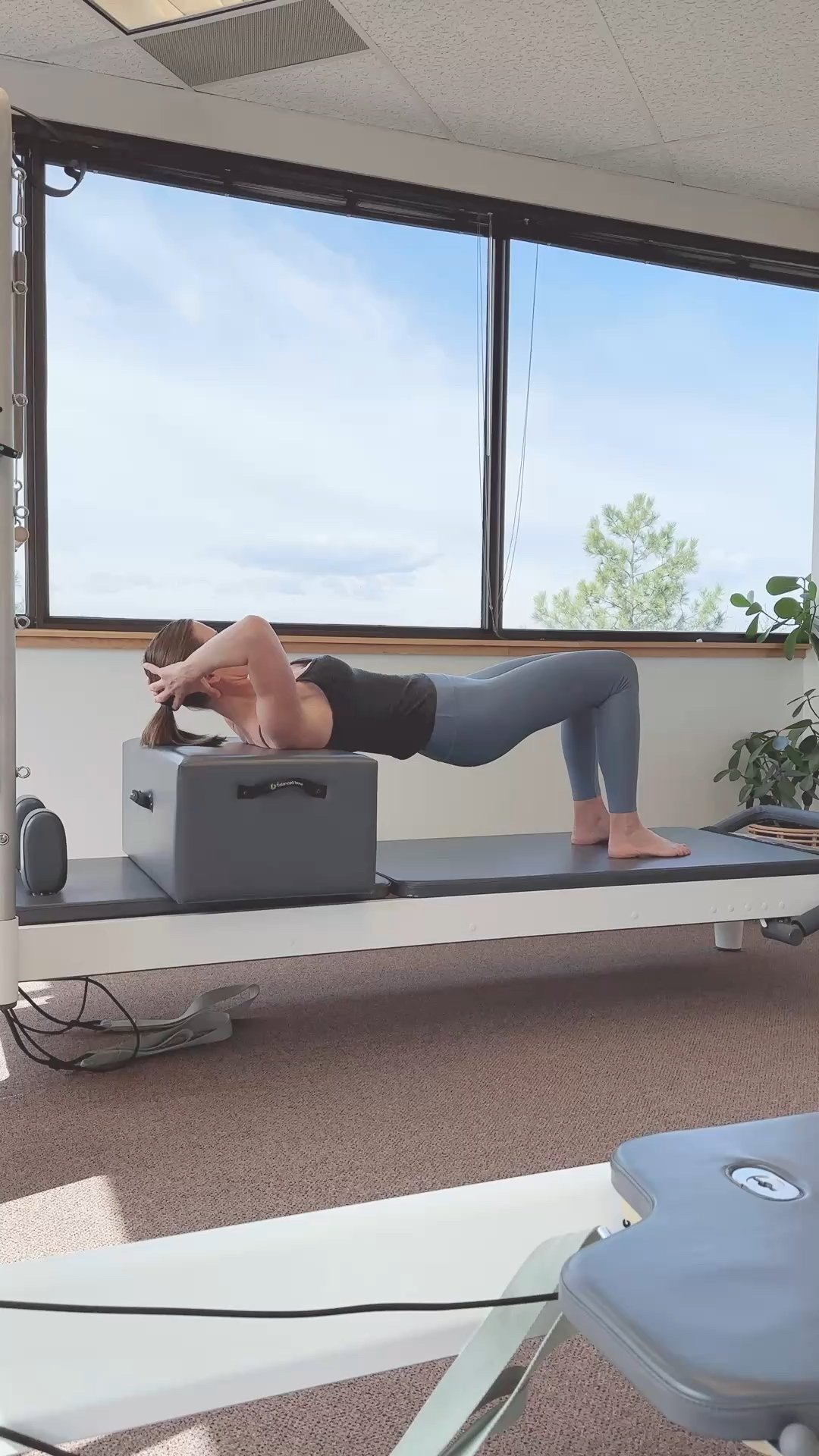STRONG GLUTES, STRONG PELVIC FLOOR
If you’re postpartum, chances are you’ve heard about the importance of healing your pelvic floor. Maybe you’ve tried Kegels, avoided jumping exercises, or wondered why sneezing suddenly feels risky. But what many new moms don’t realize is that focusing solely on the pelvic floor can miss a big piece of the puzzle—your glutes.
Strong glutes play a major role in supporting your pelvic floor, improving posture, and helping you feel more stable and strong as you navigate life after baby.
A 2020 study in the Journal of Manipulative and Physiological Therapeutics looked at the effectiveness of strengthening the gluteus maximus, medius, and inner thigh muscles in addition to the pelvic floor muscles in the treatment of urinary leakage. They concluded that working the glutes positively impacts the pelvic floor. Strengthening the hip muscles in combination with the pelvic floor muscles significantly decreased daily urine loss compared to targeting the pelvic floor muscles in isolation.
Let’s talk about why your glutes and pelvic floor need to work together. Pregnancy and childbirth (no matter how you delivered) put a lot of stress on your core and pelvic region. Muscles stretch, ligaments loosen, and your body adapts in incredible ways.
Many postpartum women unknowingly adopt a posture where they stand with their glutes clenched and tailbone tucked under, often in an attempt to feel more stable. Over time, this posture can create excessive tension in both the glutes and pelvic floor muscles. This also weakens the muscles, making it harder for them to engage and relax properly. The result? A pelvic floor that feels tight, overworked, and under-supported—contributing to common postpartum issues like:
Leaking urine with sneezing, coughing, or running
Pelvic heaviness or pressure
Lower back or hip pain
Core weakness
How Strong Glutes Support a Healing Pelvic Floor
Pelvic Stability: The glutes work with the pelvic floor, deep core, and lower back muscles to stabilize your pelvis. A strong, stable pelvis gives your pelvic floor a solid foundation to function properly.
Better Posture: The late-pregnancy sway back or “mom posture” often lingers postpartum. Strong glutes help align your pelvis and spine, which reduces unnecessary downward pressure on the pelvic floor.
Load Distribution: Strong glutes absorb and distribute forces from movement (like walking, running, or lifting) more effectively, so your pelvic floor doesn’t take on more than it should.
Coordination of the Core Canister: Your core isn't just your abs—it's your diaphragm, deep abdominals, pelvic floor, and yes, your glutes too. All of these muscles work together like a pressure system. If one part is underperforming, the whole system can suffer.
How to Build Stronger Glutes (Without Forgetting the Pelvic Floor)
If you’re thinking squats and lunges, you’re not wrong—but it’s also about mindful movement. Strengthening your glutes with proper technique while being aware of pelvic alignment and core engagement is key. Begin with unclenching. Many of us hold chronic tension in our glutes, mistaking tightness for strength. The first step is to bring awareness to this gripping and learn to release it—softening the muscles to allow for proper activation later.
Once the glutes are unclenched, you'll want to lengthen the muscles to create space in the hips, allowing the muscles to contract from a more optimal position. Then you can strengthen the glutes in this newly available, functional range. The goal is to build power from a place of alignment and ease, not tension and compensation.
Amy DiRuzzo, a Doctor of Physical Therapy at Align Pilates & Physical Therapy in Denver, demonstrates 2 exercises that target both the glutes and the pelvic floor muscles:
#1 HIP THRUST - 10 reps
Inhale to lift your hips off the mat, feeling the work in your glutes. Exhale to lower your hips down, feeling your hips and glutes lengthen.
#2 HIP HINGE + STEP UP - 10 reps each side
With your left foot on a step or block, reach your hips back until you feel a stretch in the left glute. Then work the left glute by stepping up onto the block and lifting your right knee.
Postpartum recovery isn’t just about “bouncing back”—it’s about building a stronger, more supported body that serves you and your new lifestyle. If you’ve been doing Kegels forever with no noticeable improvement, it might be time to zoom out and look at the bigger picture. Strong glutes can create a supportive environment for your pelvic floor to function at its best. So next time you hit the gym or your mat, don’t forget to give your glutes the attention they deserve.
REFERENCE:
Marques SAA, Silveira SRBD, Pássaro AC, Haddad JM, Baracat EC, Ferreira EAG. (2020) Effect of Pelvic Floor and Hip Muscle Strengthening in the Treatment of Stress Urinary Incontinence: A Randomized Clinical Trial. J Manipulative Physiol Ther, 43(3):247-256.
Interested in a personalized Pilates/Physical Therapy session to address your pelvic floor?
Reach out and let’s talk!
Amy DiRuzzo is a Doctor of Physical Therapy and Nationally Certified Pilates Teacher in Denver with more than 15 years of experience in women’s health. She helps mothers build deep, inner core strength the right way. If you have experienced a C-section, Diastasis Recti, back pain, pelvic floor dysfunction or just generalized core weakness, her workouts are perfect to help you safely regain strength and confidence in your body, allowing you to return to the adventures you love.





